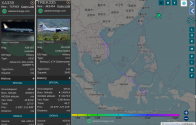The US did lose an entire generation of equipment design cycle because of GWOT spending and GWOT-specific equipment procurement. For example, think of the Zumwalt and LCS. Even if these programs were not failures they would still be wasted resources and time. They were born out of USN's desire to insert itself into counter-insurgency (read: occupation) wars, which is an egregious idea on its own. The F-35, regardless of how capable it is, is a result of very dubious concepts (realize how 6th gen concepts are the opposite of what the F-35 is) and a horribly managed program too.Exactly, ten years from now China will be so much further ahead economically and industrially as well that the US really can't compete anymore. The terrible 20s just mean that the inflection point is coming even earlier.
The main problems for Chinese foreign policy have been Trump, COVID and the Ukraine war. None of these has been started by Xi. Maybe he didn't handle them as well as possible, but the overall direction of Chinese foreign policy has been dictated by these events from outside the government's control
What US media doesn't want to mention is there is no return from that mistake. The decade of danger conveniently assumes they can make up for 16 years of wrong policy just because they realized the problem. It rests on the assumption that they can re-establish the technological lead and ramp up numbers faster than the PLA after 2030. I don't see why that should happen. The current situation was contributed heavily by the US being distracted but that doesn't mean it is temporary.

